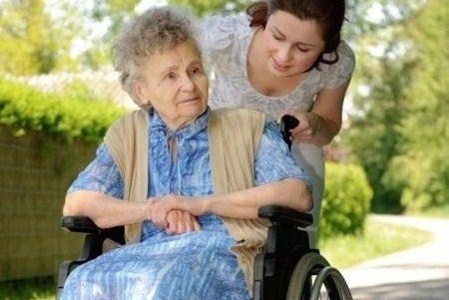Helpful Tips for Caregivers
0 Comments
Educate Yourself
Educate yourself about your loved one’s illness or condition. Knowing as much as you can will help you communicate effectively with the physicians and other healthcare professionals who are involved in your loved one’s care. The more you know, the more effective you will be. Photo: Getty Images

Know Your Limits
Have a realistic awareness of your limits. Know how much of your time and yourself you are able to devote as a caregiver. Set clear limits and formulate a schedule. Communicate these limits to physicians, family members and anyone else involved. Photo: Getty Images

Reward Yourself
Being a caregiver is a job. Reward yourself with respites, which you have rightfully earned. Accept offered help and suggest specific ways that someone can help. Be good to yourself so that you can be a good caregiver. Photo: Getty Images

Deal with Your Emotions
As a caregiver, you will experience a myriad of emotions. Step away from the situation long enough to allow yourself to feel anger, fear, resentment, helplessness, guilt or grief. Confide in family members, members of a support group or trusted friends. Share your feelings and get supportive help to cope with your feelings. Photo: Getty Images

Develop a Routine
The caregiver assumes the responsibility of bathing, dressing and sometimes, feeding the person whom she is caring for. Plan in advance, making sure you have everything ready and available, be patient and consistent in your routine. This can help both of you cope with the activities of daily living. Photo: Getty Images

Exercise
Including exercise in the daily routine is beneficial for the caregiver and the one needing care. Be realistic and aware of physical discomfort and limitation. A short walk in the yard, taking a wheelchair bound person for an outing around the block or tending a window box for someone who enjoyed gardening are some ways to incorporate physical activity in the day. Photo: Getty Images

Hints with Bathing
You may be responsible for bathing your loved one. The extent of the disability or illness dictates how much you will need to do. Plan for the bath or shower at a time of day that is best for both of you. Have everything that you will need ready before you bring the person to the tub or shower. Be gentle, patient and calm. Tell the person what you will be doing and allow her to do as much as possible. Minimize safety risks by using grab bars, a shower bench, non-skid bath mats and a handheld shower head. Never leave the person alone in the shower or tub. You may find that a sponge bath in between a shower or tub bath becomes necessary. Photo: Getty Images

Tips for Dressing
Encourage the person to dress himself as much as possible. Arrange the clothes in the order they need to be put on. Choose clothing that is comfortable and easy to get on and off. Clothing with elastic waists and Velcro enclosures will make the routine of dressing easier. Plan for extra time and be patient. Photo: Getty Images

Healthy Diet
A healthy diet is important for both of you. You need to eat a well-balanced diet, avoid skipping meals and keep well hydrated to maintain your own good health and stamina. Getting your loved one to eat can be a challenge, especially if the person has difficulty chewing, swallowing or experiences a loss of appetite, such as with chemotherapy. You may need to puree foods, use nutritional liquid supplements or offer small nutritious meals and snacks throughout the day. Photo: Getty Images

Coping with Incontinence
Incontinence of the bladder and bowel often occurs with illness and aging. Establish a routine for bathroom breaks and watch for cues that a person needs to use the bathroom, such as restlessness or tugging at one’s clothes. Limit caffeinated beverages in the evening to prevent nighttime accidents. When going out, dress the person in comfortable, easy to remove clothing, know where restrooms are located and carry an extra set of clothing in case of an accident. Accidents will happen. Stay calm and be reassuring. Sources & Resources: HelpGuide.com National Institute on Aging.gov Article by Maryann Gromisch Photo: Getty Images
Add a CommentComments
There are no comments yet. Be the first one and get the conversation started!